Introduction
If you're looking for a way to enhance security and aesthetics in your space, then concrete bollards may be the solution you need. In this guide, we'll explore the best types of concrete bollards and their various uses. You'll discover the benefits, installation considerations, and design options available to you.
Concrete bollards are a versatile and reliable option for traffic control, pedestrian safety, and property protection. Understanding the different types and uses of concrete bollards is essential to making the right choice for your space.
The Basics of Bollards
A bollard is a short vertical post that is designed to guide or restrict traffic. Bollards have been used since ancient times, and today they serve a critical role in modern society. Concrete bollards are particularly important due to their strength and durability.
Anatomy of a Concrete Bollard
Concrete bollards are made from a combination of cement, water, and aggregates (e.g., sand, gravel, or crushed stone). They can come in various sizes and shapes, depending on their intended use. The lifespan of a concrete bollard can vary depending on factors such as the quality of the materials used, the environment in which it is installed, and the level of maintenance it receives. However, on average, concrete bollards can last for several decades.

Types of Concrete Bollards
Here are the features and benefits of each of the four main types of concrete bollards:
Fixed Bollards: These bollards are permanently installed and offer the highest level of security and protection. They are ideal for areas that require continuous traffic control and pedestrian safety.
Removable Bollards: These bollards can be easily removed and reinstalled as needed. They are ideal for areas that require periodic access for emergency vehicles, maintenance, or special events.
Retractable Bollards: These bollards can be raised or lowered as needed, providing flexibility and control. They are ideal for areas that require temporary or occasional traffic control, such as parking lots or pedestrian zones.
Lighted Bollards: These bollards are equipped with built-in lighting, providing both aesthetics and safety. They are ideal for areas that require enhanced visibility at night or in low-light conditions.
Comparative Analysis: Concrete Bollards vs. Other Materials
Concrete bollards are a popular choice, but how do they compare to other materials like metal, plastic, or wood? Understanding the pros and cons of each material can help you make an informed decision.
Here are some pros and cons of concrete bollards compared to other materials:
Metal
Pros:
Metal bollards offer a range of finishes available such as polished or powder-coated.
They are typically more lightweight and easier to install than concrete bollards.
Metal bollards are also more resistant to corrosion and weather damage than concrete bollards.
Cons:
Metal bollards are more expensive than concrete bollards.
They are not as durable as concrete bollards and may require more frequent maintenance.
Plastic
Pros:
Plastic bollards are often less expensive than concrete or metal bollards.
They are lightweight and easy to install.
Cons:
Plastic bollards are not as durable as concrete or metal bollards and may require more frequent replacement.
They are not as strong as concrete or metal bollards and may not provide the same level of protection.
Wood
Pros:
They are typically less expensive than metal bollards.
Cons:
Wood bollards are not as durable as concrete or metal bollards and may require more frequent replacement.
They are more susceptible to weather damage and decay than concrete or metal bollards.
Overall, concrete bollards are a popular choice due to their strength and durability.They offer reliable protection and require less maintenance over time.

Uses of Concrete Bollards
Concrete bollards have a wide range of uses, including traffic control, pedestrian safety, architectural enhancement, and property protection. Understanding the different applications of concrete bollards can help you choose the right type for your space.
Buying Guide for Concrete Bollards
When choosing the right type of concrete bollard, it is essential to consider various factors, including the intended use, budget, and installation requirements. Sourcing from trusted manufacturers can ensure that you get high-quality bollards that meet your needs. You may also want to consider customization options to ensure that the bollards match your space's aesthetics. It is important to note that installing concrete bollards requires specific tools and safety measures, so it is advisable to hire a professional installation service. By making an informed decision and taking proper care of your concrete bollards, you can enjoy their benefits for years to come.
Installation Guide
When installing concrete bollards, it is important to ensure that you have the right tools and equipment on hand. This includes a drill, concrete anchors, and a level. It is also important to ensure that the bollards are installed at the correct depth and spacing to ensure maximum stability. In addition, safety measures should be taken during installation, such as wearing protective gear and ensuring that the surrounding area is clear of bystanders. Following the proper installation process can help ensure a secure and durable installation that will provide reliable protection for years to come.
Maintenance and Repair of Concrete Bollards
Concrete bollards are known for their strength and durability, and they require less maintenance over time. With proper care, they can last for several decades. Regular maintenance is still crucial to ensure their longevity, but concrete bollards are a reliable option for enhancing security and aesthetics in your space.

Legal and Regulatory Considerations
Compliance with local laws, ADA regulations, and insurance considerations are essential when installing concrete bollards. Understanding the legal and regulatory framework can help you avoid costly mistakes.
Conclusion
Concrete bollards are a versatile and reliable option for enhancing security and aesthetics in your space. Understanding the different types, uses, and installation considerations can help you make an informed decision. They are an excellent investment for any space that requires traffic control, pedestrian safety, or property protection.
FAQs
Q. What is the lifespan of a concrete bollard?
The lifespan of a concrete bollard can vary depending on factors such as the quality of the materials used, the environment in which it is installed, and the level of maintenance it receives. However, on average, concrete bollards can last for several decades.
Q. Can concrete bollards be painted or customized?
Yes, concrete bollards can be painted or customized. Customization options include adding logos or designs to match the aesthetics of your space. Painting can also be done to match the surrounding environment or to add visibility to the bollards. It is important to ensure that the paint used is designed for use on concrete and will not peel or fade quickly.
Q. How do you install a concrete bollard?
When installing a concrete bollard, you will need a drill, concrete anchors, and a level. It is essential to install the bollards at the correct depth and spacing for maximum stability. Safety measures should be taken during installation, such as wearing protective gear and ensuring that the surrounding area is clear of bystanders. It is advisable to hire a professional installation service to ensure that the bollards are installed correctly.
Q. How much does a typical concrete bollard cost?
The cost of a typical concrete bollard can vary depending on factors such as the size, design, current market, and installation requirements. On average, however, fixed concrete bollards can range from around $150 to $500 per bollard, while removable bollards can range from $500 to $1,500 per bollard. Retractable and lighted bollards can be more expensive, with prices ranging from $1,000 to $5,000 or more per bollard.
Q. Are concrete bollards eco-friendly?
Concrete bollards can be considered eco-friendly because they can be made from recycled materials, and they are durable and long-lasting, reducing the need for frequent replacements. Additionally, they can be designed to incorporate sustainable features such as solar-powered lighting or greenery. However, it is important to ensure that the manufacturing process and transportation of the bollards are done in an environmentally responsible manner.


















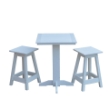





























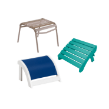





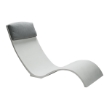







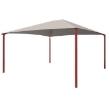
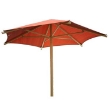
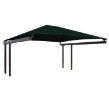
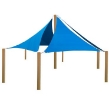
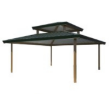
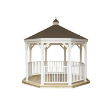
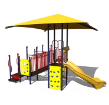











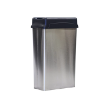




























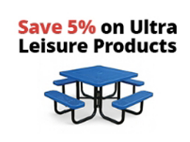




Leave your comment